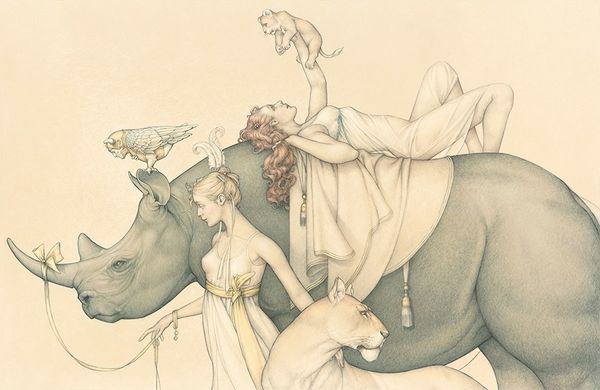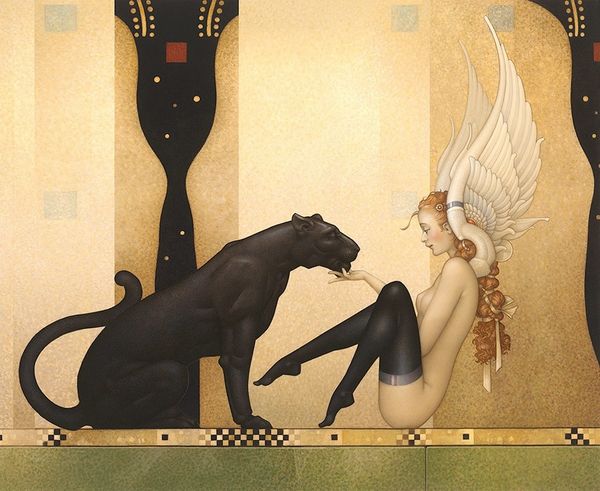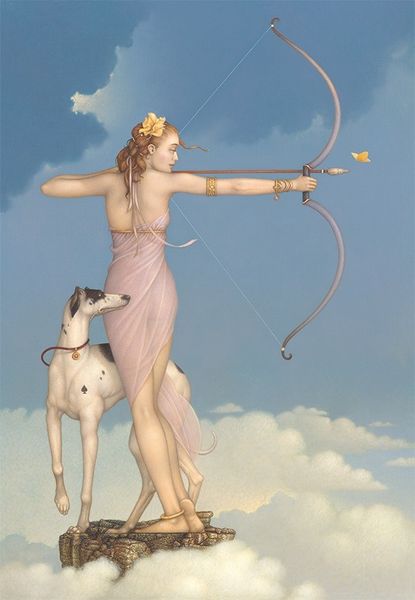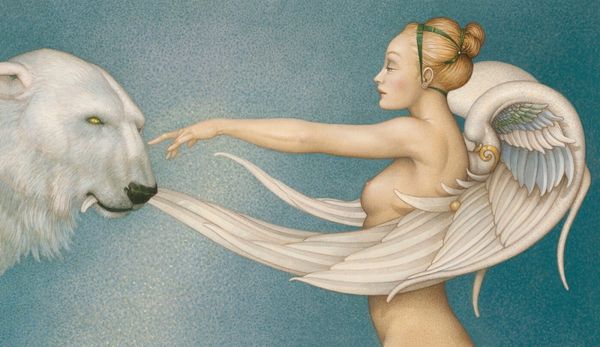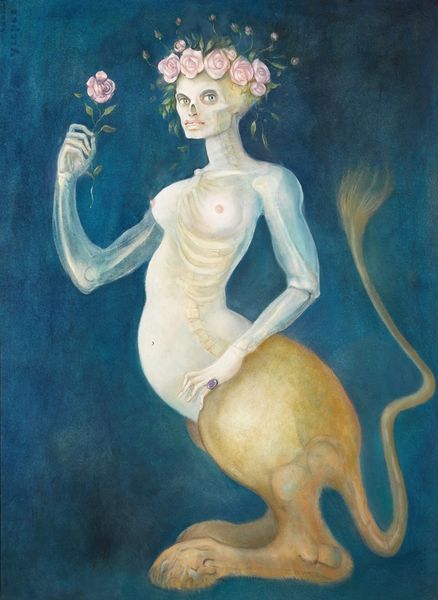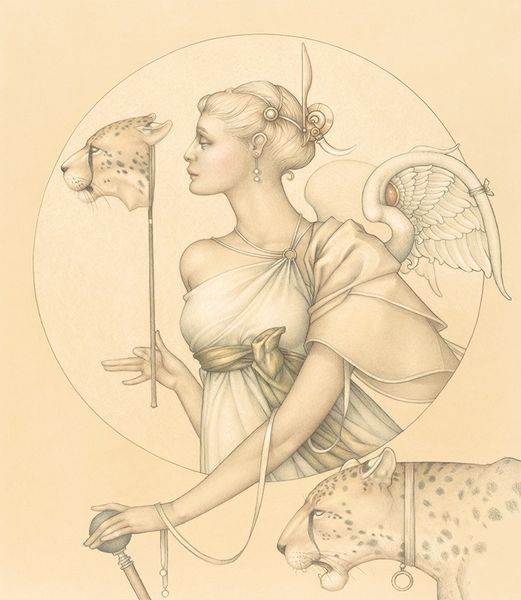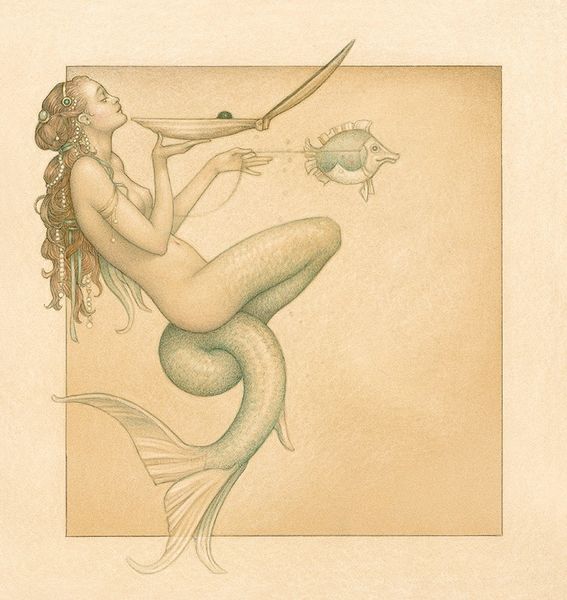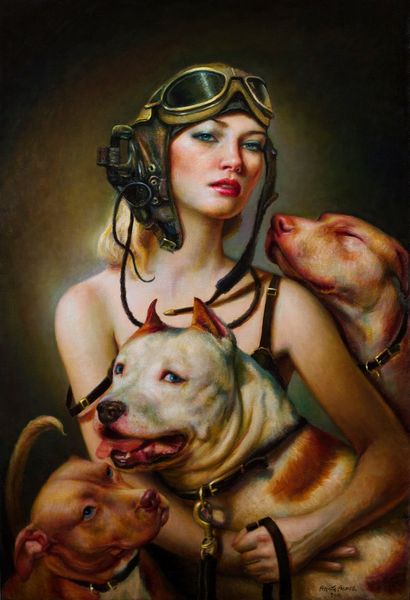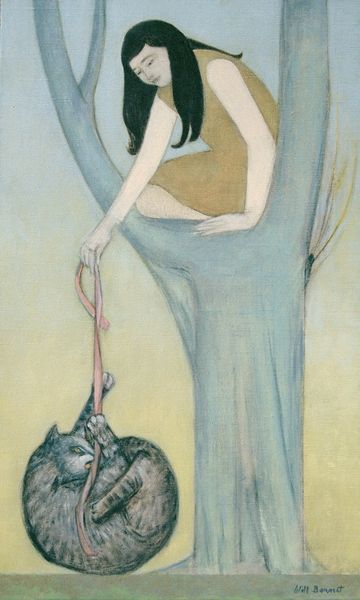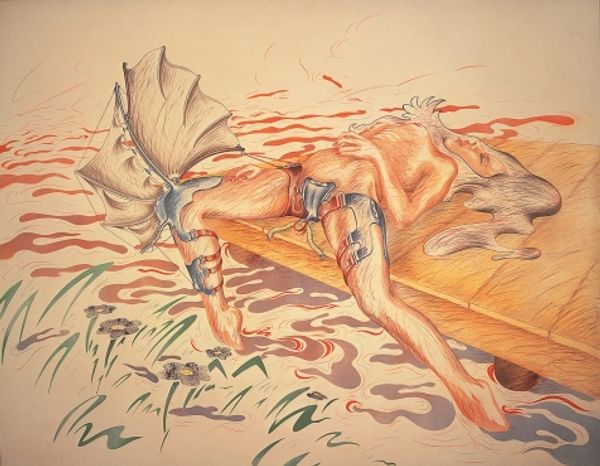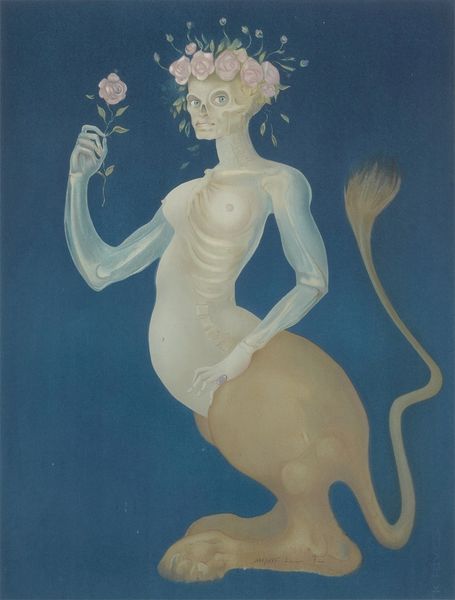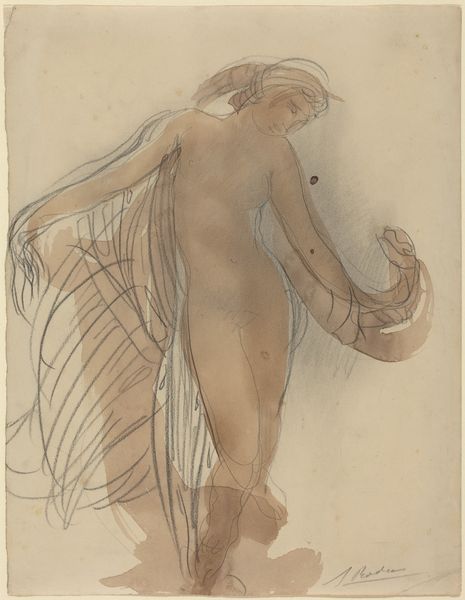
drawing, pencil, graphite
#
portrait
#
drawing
#
allegory
#
classical-realism
#
charcoal drawing
#
pencil drawing
#
pencil
#
graphite
#
portrait drawing
#
graphite
Copyright: Modern Artists: Artvee
Curator: We are looking at "Goddess of the Hunt" by Michael Parkes. The medium appears to be graphite and pencil on paper. What are your immediate impressions? Editor: Striking! The contrast in the textures, the sleek solidity of the panther against the ethereal depiction of the goddess... it gives a tactile sense of power, of control, like raw and refined energy perfectly balanced. Curator: Indeed, the formal composition guides the eye through contrasting themes. Consider how the tonal variations establish figure and ground. The detailed rendering, characteristic of classical realism, invites symbolic interpretations. Editor: But it's not just about seeing, is it? The tools, the physical labor—layering graphite to achieve that depth in the panther's coat must have been intensive. The making of that animal practically demanded respect for its material form, contrasting the wispy treatment of the goddess. Curator: The subject's allegorical representation connects directly to the Western canon, especially in Parkes' exploration of mythological narratives. It exemplifies visual semiotics through culturally established signs. Note the bow, the animal companion. Editor: I think framing it all within 'allegory' somewhat dilutes the physical relationship presented. We have human dominance enacted through the animal restraint, played out materially in Parkes’ choices of line and shade. I see how it represents a literal struggle for dominance. Curator: Of course. The composition establishes hierarchical meaning through studied contrasts, using light and shadow to draw our eyes toward different elements. It’s fascinating how a modern hand revives these historical forms to articulate a vision of timeless struggles. Editor: Revives, but also recreates. Parkes doesn't just illustrate the myth; he puts it to work, physically building this narrative layer by layer. That careful application of material speaks to repetitive labor as a part of myth-making and reiterates narratives through process. Curator: A potent point. On reflecting further, one notices a beautiful tension arising between that traditional idealism and such a grounded methodology. Editor: It’s been a good lesson in understanding what we are actually looking at.
Comments
No comments
Be the first to comment and join the conversation on the ultimate creative platform.
